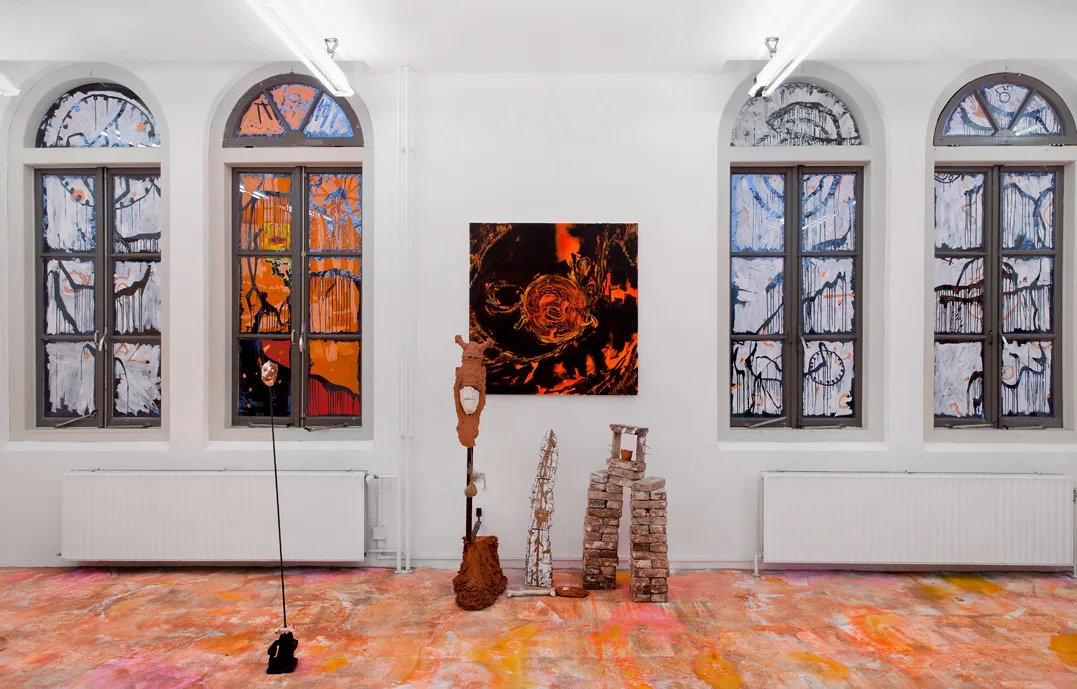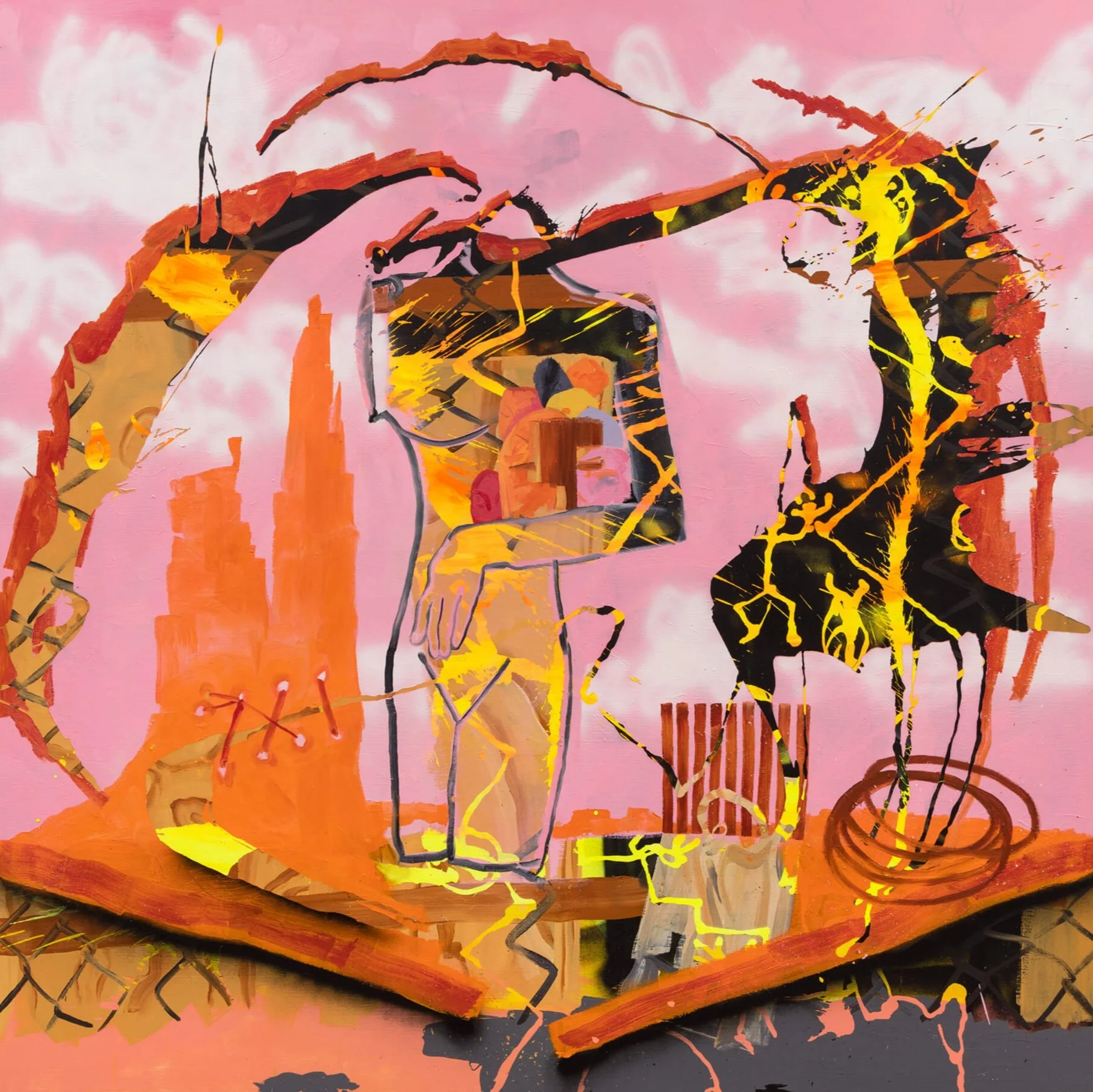
Artist Esteban Cabeza De Baca grew up on the border of the USA and Mexico, the reality of which would impact his life and career for years to come. That border - and the treatment of those attempting to cross it - is never far from headlines in 2019, but even before Trump took his seat in the Oval Office, Esteban was aware of cultural oppression and the otherness that comes from straddling both cultures.
Living in San Ysidro, as a child he would visit his family just across the border in Mexico. They in turn would take trips to the States. Having one foot in both worlds Esteban grew up seeing the tangible, human side of the news reports filling our screens now. ”Tijuana and San Ysidro are beautiful places, much more complex than any news headline,” Esteban says. “My grandma Chole and great Grandma Bondita ran our house as a conduit for ideas, gossip, friends and family to gather. In our basement we would house families seeking asylum and work. I grew up in a family that valued human dignity.”


Esteban was also raised in a family that fostered the spirit of activism in him at a young age. This in turn further shaped his understanding of struggle and the notion of belonging. His father was part of the Brown Berets, the Chicano movement, the American Indian Movement and Black Panther movement, and as a professor wrote a book about the Native and Mexican American experience in the southwest. His Mexican-born mother worked alongside his father in these efforts and is also a union organizer for public employees in Colorado. “They raised me to see past tribal boundaries of identity and instead towards intersectional political awareness,” he says. “Mostly they taught me to live a life of love and passion and that conviction drives me across borders into political and artistic action.”
Esteban's parents supported his talent as an artist, and now the painter and sculptor channels his own activism through art. Having trained at Cooper Union and Columbia University Esteban creates work that filters his own views, resulting in paintings that are inspired by history, warped science fiction writing by the likes of Kurt Vonnegut and Octavia Butler, and the color of clay from the earth. Fiery hues burn bright on his canvases, hinted walls crumble and space and time merge into spiralled motifs.

Esteban’s work acts as a conduit to link past, present and future, weaving narratives that hint at America’s colonialism, his heritage and the complexities of cultural appropriation in art through the years. “Most of all, I want to talk to my ancestors for help in our time of turmoil,” he says. “I talk through touching clay as my call and response to my ancient relatives whose bones lay in the earth.” The motifs Esteban uses are also a nod to his ancestry. “They are predominantly from ancient cave paintings in New Mexico, where my family has been living for thousands of years,” he says. “So much of the Southwestern United States is exploited for natural resources so I want to keep those motifs like the spiral alive. The spiral breaks with linear perspectives of space and instead charts naturally occurring interconnected pattern. The motifs are a gateway to access a hidden force invisible around us all. Specifically, I’m trying to gain space in the art canon for a new perception of space and time. I want to take painting somewhere more vast and intense than words can describe.”

Before starting a new piece of work Esteban takes to the landscapes around him for inspiration, working from photographs he has taken or occasionally painting in situ. Once the initial painting is done he begins the process of dismantling and putting back together, working with paint drips or sometimes even ripping a piece up in order to rebuild it. No act is random though, the complexity of Esteban’s work is that each stage is motivated by deep understanding of actions of the past - even down to “how the color of European painting expanded due to extraction of natural pigments from colonial territories.”
“I think about what happened in 1492 with Columbus and how we have overcome,” he says. “I think about how Jackson Pollock took from Navajo sand painters working on the ground and extracted their culture. What I want to do is excavate the impact of colonial acts like that and go farther with the drip than Pollock did and collide the infinite with the everyday.”

“My people have been moving around this country for thousands of years,” he continues. “Europeans committed genocide to fit us into neat reservations or borders. I realize these issues will always be with me during my lifetime, so I keep an even commitment to open expressionism.”
Speaking with Esteban it’s hardly surprising that he turned to art, he gives himself to his canvas. His work is an extension of, not just himself, but also his ancestors. It speaks to displacement and belonging, to the notion of who we are, where we came from and what that means in the past, present and future. And today, those conversations have a renewed sense of urgency.


“Art can and should do anything it wants. My job is to get people to think, not tell them what to think,” he says. “I think about the repercussions of almost 400 years of colonial rule in this country. I think about the demographic shift that will happen in the US where Brown, Black and Red people will become the majority. I want to show people we aren’t illegal on our own continent.
“The earth and humanity are in rough shape. Art matters and can be a collective unconscious. We don’t need art like food and safety. But art is free expression which is vastly more powerful than the cruelest of intentions.”